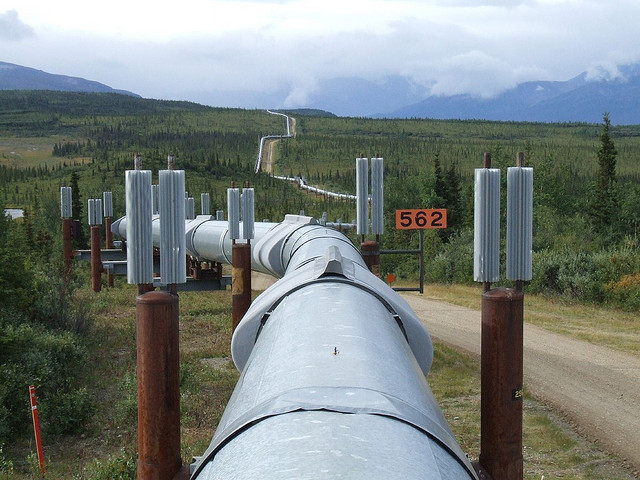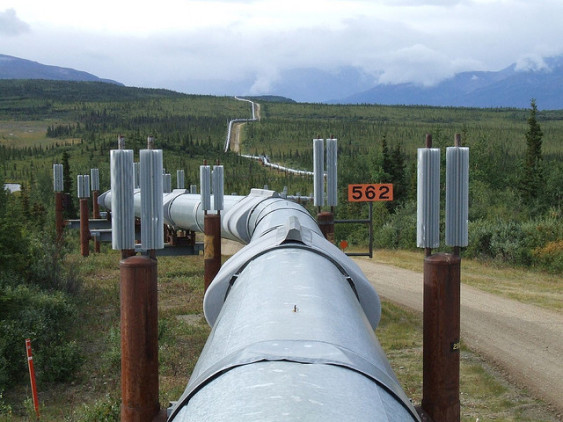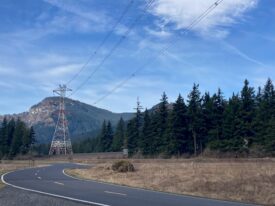When Washington Governor Jay Inslee reversed course last month to oppose two big gas infrastructure projects, it may have marked the turning of the tide against an industry that has enjoyed seemingly unfettered growth in the Northwest.
And it isn’t a moment too soon.
Even as climate scientists’ warnings become more urgent and our understanding of the harmfulness of fracked gas sharpens, the industry continues to bank on big expansions.
Not without reason. In 2017, the most recent year for which complete data are available, the Northwest states used record amounts of gas, with residential gas consumption growing steadily for decades. The industry forecasts even more growth this year—and it’s only just begun. Look around the Northwest and proposals for new and expanded pipelines, LNG exports projects, and various gas-to-petrochemical schemes abound. All of them feed off one another in a vicious cycle of climate irresponsibility.
Plans for a pipeline called the Pacific Gas Connector would deliver natural gas to the proposed Jordan Cove LNG export facility in Coos Bay, Oregon. There, more than a billion cubic feet of fracked gas would get consumed per day—that’s 8 times more than what is used by every residence in Oregon, combined. Meanwhile, the Kalama gas-to-methanol export site on the Columbia River would demand 320 million cubic feet per day—roughly the same amount as is consumed by every home in Oregon and Washington.
Smaller than those giants, but still large, are proposals like Tacoma LNG (roughly 44 million cubic feet per day), the North Seattle Lateral pipeline expansion in Snohomish County, Washington (about 150 million cubic feet of new capacity), and an ammonia fertilizer factory in Longview, Washington (50 million cubic feet per day). Then there’s the titanic LNG industry in British Columbia where dozens of export projects have been clamoring to find financial viability and regulatory approval.
Each of those projects would need to be fed gas delivered from elsewhere, which would mean expanded drilling and fracking and big new pipeline expansions to deliver the gas. Multiple major pipeline projects designed to carry huge quantities of fracked gas are already in advanced planning stages, according to a recent report from the Northwest Gas Association.
The Canadian pipeline company Enbridge is proposing a number of upgrades to its gas delivery system in a project known as the T-South Expansion. The project would add 190 million cubic feet per day in new capacity from the Montney Basin gas fields in northern British Columbia to the US border connection point at Sumas, Washington. Project backers expect it to be operational sometime between 2021 and 2023.
Meanwhile, FortisBC’s Southern Crossing Expansion would enable greater shipments of Alberta-sourced gas to industrial projects on the coast, in particular, British Columbia’s Lower Mainland region and the Interstate-5 corridor of Oregon and Washington. The project would bring online 300 to 400 million cubic feet per day of new gas capacity.
And there’s more. TransCanada has several small projects to increase the capacity of its NGTL System West Path in British Columbia in order to serve gas from Alberta to export projects on the coast. Together, these planned expansions would boost daily capacity by another 260 million cubic feet.
TransCanada has a project in Oregon too, where it is working with the utility NW Natural to develop the Trail West Pipeline project with an eye toward delivering more gas to the Portland area from a major existing pipeline in Central Oregon. The new 30-inch diameter gas pipeline is designed to transport 500 million cubic feet per day with an option to double that amount in the future. The industry believes that it could go into service by late 2023.
Finally, in Washington, Williams Northwest is assessing an expansion on its big mainline transmission pipeline that runs south from the Canadian border at Sumas to deliver gas along the I-5 corridor. In the near term, the company believes that it can meet demand growth by beefing up infrastructure at compression stations along the system. A recent moratorium on fossil fuel construction would forestall any activity in King County, but the company would like to pursue expansions at its existing compressor stations in Skagit, Snohomish, Pierce, and Thurston counties.
All these projects are part of a long-standing (and effective) tactic that the gas industry has deployed in the Northwest. It has created a self-fulfilling cycle of finding new demand for gas that requires building more supply infrastructure which in turn creates more demand. It’s arguably good for industry profits, but it’s locking the region into a cycle of ever-growing fossil fuel use and greenhouse gas emissions.
The Northwest is home to a forceful climate movement that aims to reduce fossil fuel use. Yet unless we stop the gas industry’s cycle of dependence, it will enjoy many more decades of expansion—a future that our climate cannot afford.
Thanks to Ximena Fonseca-Morales and John Abbotts, who both contributed important research for this article.
Eric de Place is Sightline’s Director of Thin Green Line and he spearheads our work on energy policy. Known as a leading expert on coal, oil, and gas export plans in the Pacific Northwest, he is considered an authority on a range of issues connected to fossil fuel transport, including carbon emissions, local pollution, transportation system impacts, rail policy, and economics. He has researched and published more than four hundred articles, reports, and analyses on these proposals. For questions or media inquiries about Eric’s work, contact Sightline Communications Manager Anne Christnovich.










Diane Dick
Note that gas pipeline compressor stations in themselves are significant emitters of GHGs, so any expansion of those compressors even without new pipelines will increase GHG emissions. Plans to expand or enhance compressors should go through environmental impact and air quality reviews.
Dave Somers
The “moratorium” in King County does not affect pipelines. Our legal folks in Snohomish County have advised us that counties do not have legal authority to regulate pipelines. That authority apparently resides with the state.